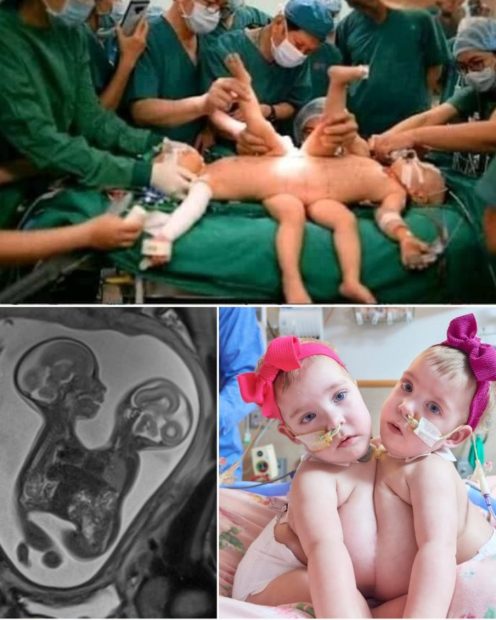In a remarkable breakthrough for both medicine and humanity, Brazilian doctors have successfully separated conjoined twins Arthur and Bernardo Lima, who had been joined at the head since birth — a condition known as craniopagus. This extraordinary feat, the result of tireless planning and innovative medical technology, offers hope to families of conjoined twins worldwide and demonstrates the incredible potential of modern surgical techniques.

Craniopagus twins, where the twins are fused at the skull, represent one of the rarest and most complex forms of conjoined twins, accounting for less than 1 in 60,000 births. The condition is particularly challenging because the twins share brain tissue, critical blood vessels, and often portions of their skulls. This shared anatomy presents immense challenges for surgeons, requiring meticulous planning and groundbreaking surgical methods to ensure the safety and success of such an operation.
Arthur and Bernardo Lima were born in 2018 in Roraima, Brazil. For nearly four years, they were physically and neurologically connected — unable to turn their heads freely or fully see each other. Despite the difficulties posed by their condition, the twins were healthy and thrived in their environment, supported by their devoted family. However, as they grew, it became clear that separation was necessary to allow the boys to lead independent lives. This would be no small feat; the complexity of their condition required careful preparation and an unprecedented level of collaboration from the medical community.
How did doctors manage such a delicate and intricate procedure?
The groundbreaking surgery, which took place in Rio de Janeiro, was the result of years of research, planning, and collaboration. More than 100 medical professionals, including neurosurgeons, anesthesiologists, and pediatric specialists, came together to execute this historic operation. What set this surgery apart was the innovative use of virtual reality (VR) technology in planning the separation.
Surgeons employed advanced VR simulations to create 3D models of the twins’ fused skulls and brains. These immersive simulations allowed the medical team to rehearse the complex steps of the surgery in a virtual environment, giving them a precise understanding of the twins’ shared anatomy. This world-first use of VR in a craniopagus separation marked a significant advancement in surgical planning, providing the team with invaluable insights and allowing them to fine-tune their strategy before stepping into the operating room.
After nine preparatory surgeries, the team was ready to attempt the separation. On the day of the operation, a record-breaking 23-hour surgery commenced. The procedure was grueling, as surgeons carefully navigated the twins’ shared blood vessels and brain tissues. Every movement had to be precise, as any error could lead to severe complications. But through the combined expertise of the surgical team and the use of VR technology, the doctors were able to separate Arthur and Bernardo successfully.
The surgery was nothing short of a triumph, not only for the medical team but also for the family and the entire medical community. Arthur and Bernardo are now on the road to recovery, with each twin thriving independently for the first time in their lives. While the operation itself was challenging, the boys’ resilience and the dedication of the medical team made this extraordinary outcome possible.
This achievement is a testament to the power of modern medicine, teamwork, and technology. It showcases the tremendous potential of virtual reality in surgical planning and highlights the incredible advancements that have been made in the field of pediatric neurosurgery. The successful separation of these conjoined twins opens the door for future surgeries of similar complexity, offering new hope for families affected by craniopagus and other forms of conjoined twinning.
Arthur and Bernardo’s journey will be remembered not just for the 23-hour surgery, but for the tireless collaboration of medical professionals, the innovative use of technology, and the unwavering hope and courage of a family that never gave up on their boys. Their story will inspire future generations of surgeons and medical professionals, proving that with the right tools, determination, and support, even the most complex challenges can be overcome.
As Arthur and Bernardo begin their new, independent lives, they are a living reminder of the extraordinary potential of human ingenuity and the boundless possibilities that lie ahead for medicine and science.